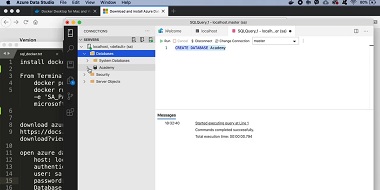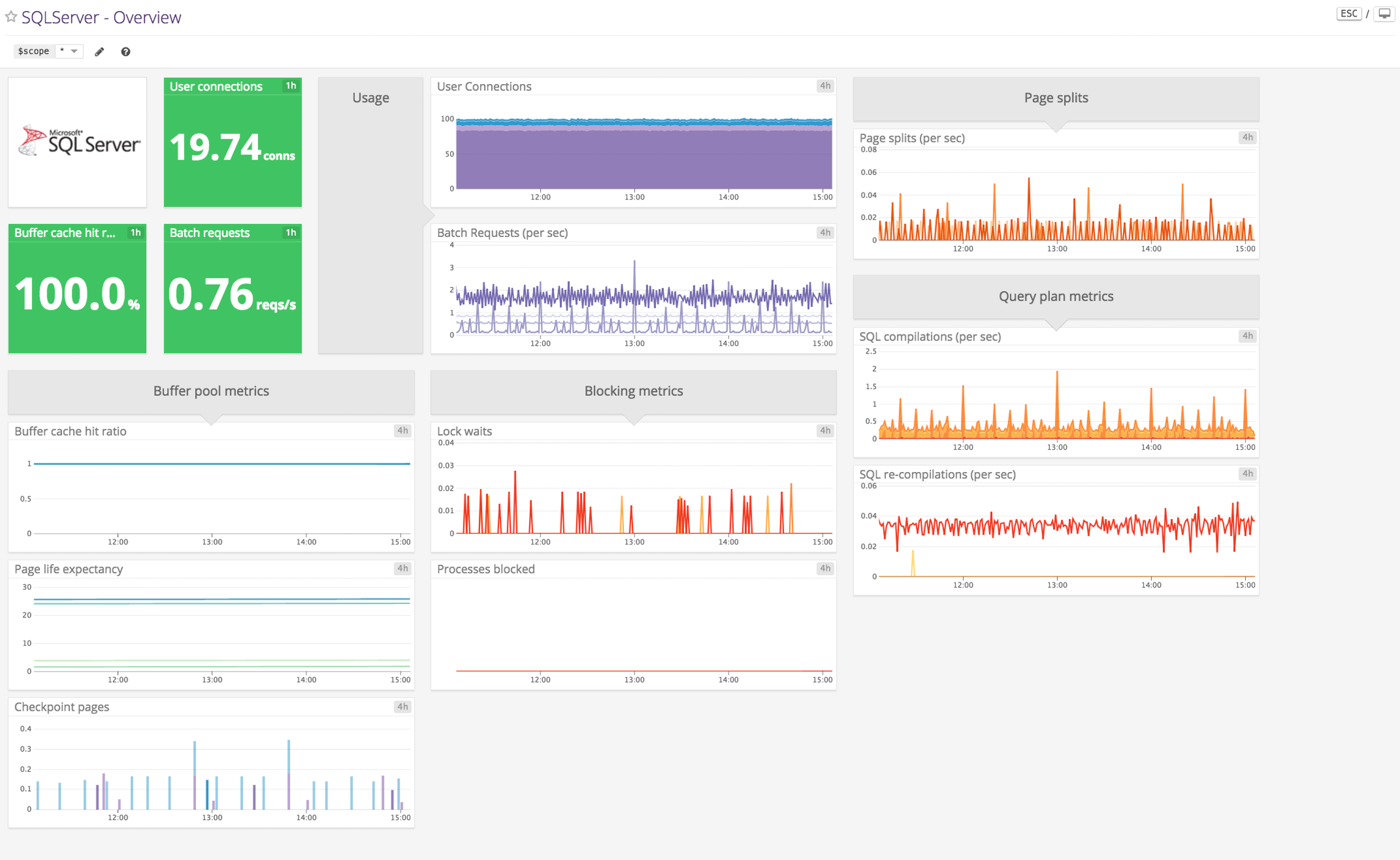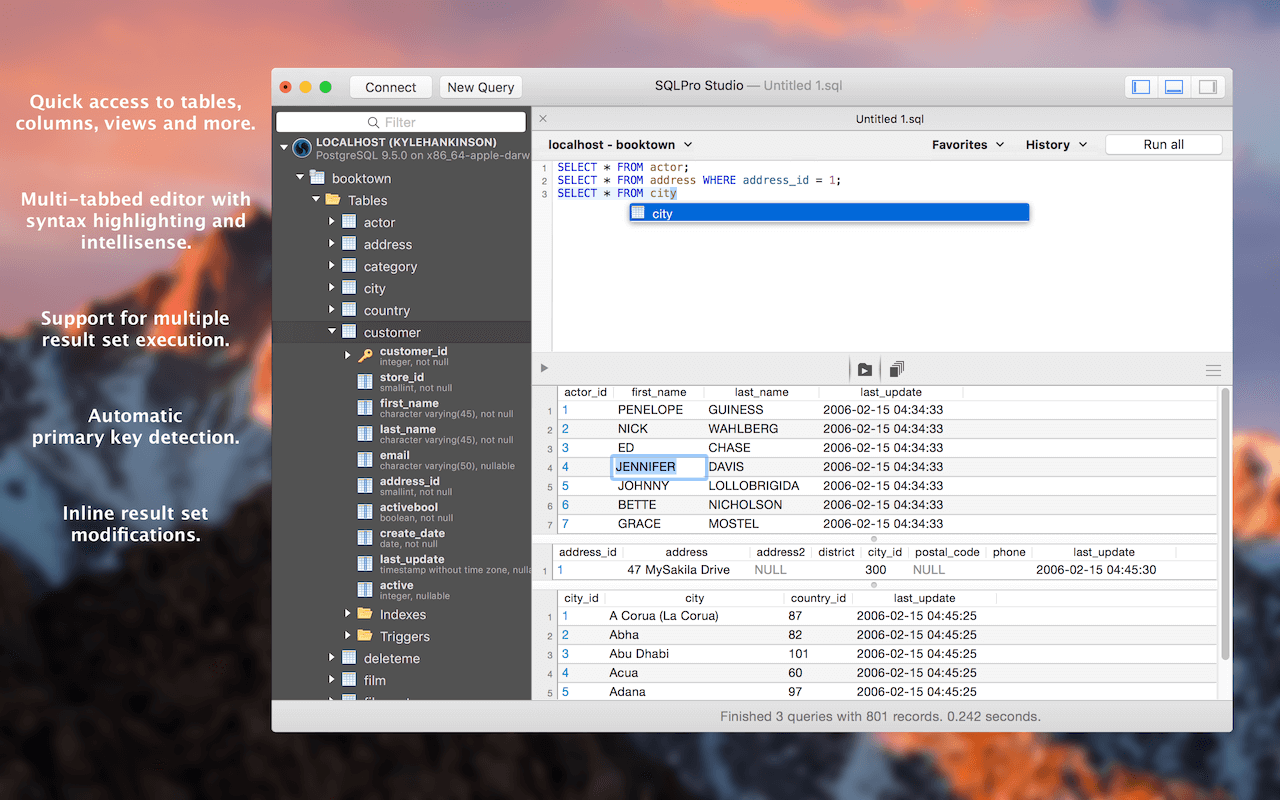

- Setup sql server on mac mac os x#
- Setup sql server on mac install#
- Setup sql server on mac drivers#
- Setup sql server on mac driver#
- Setup sql server on mac code#
Or, in modern parlance: sudo pip install pyodbc Check for these in your distribution’s package manager. You’ll also need the python-devel and unixODBC-devel package to compile against. Under SLES YAST, it is called gcc-c++ but elsewhere you might find it as g++. To compile it you will need the GNU C++ compiler. I’ve found environment variables to be useful in this process, e.g.: ODBCINI=/etc/unixODBC/odbc.ini export ODBCINI If you encounter issues, make sure that isql knows where to find your odbc ini file or it will not be able to. Now ODBC is allowing you to enter plain old SQL, INTO A MSSQL SERVER, FROM A LINUX BOX! SQL> SELECT * FROM tablename Pass isql the DSN you defined along with your username and password $ isql -v nicedsn niceuser nicepass Isql is the client installed by unixODBC. # Servername corresponds to the section in nf
Setup sql server on mac driver#
So that’s the driver registered, now we need to let ODBC know about the SQL Server we want to connect to, as set out in nfĪdd a DSN for the SQL Server in odbc.ini sudo vim /etc/unixODBC/odbc.iniĭescription = MSSQL database for my nice app Register the FreeTDS driver with ODBC sudo odbcinst -d -i -f freetds-driver In most cases, following these instructions on a Linux box, it will be in /usr/local/lib but it could vary on different UNIX-based systems. It should point to wherever the FreeTDS installation wrote the libtdsodbc.so file. Now we need to register the driver with unixODBC, using the odbcinst binary that is installed with unixODBCĮdit the file - the key detail here is the Driver line. Great! That 1> prompt smells of success! unixODBC The -S parameter refers to the section of nf: $ tsql -S egServer70 -U niceuser Port 1433 is the default port for connecting to MSSQL Servers, why not check if you can connect from your given server before trying the FreeTDS driver $ telnet IP_OR_MSSQL_SERVER_NAME 1433įreeTDS installs the tsql binary for testing your connections. In short, if you’re using SQL Server 2000 and above, use version 8.0 The tds version relates to the version of SQL server you are using.
Setup sql server on mac code#
It uses the iConv libraries to make sure you’re getting UTF-8 data over your ODBC connection, even if the SQL Server config is some godawful WIndows cp1252 ANSI code page.Ĭreate your own server config with your own credentitals. I can’t tell you how awesome this line is. I added this line to this server config… client charset = UTF-8 In the stock conf, there’s a helpful example provided: # A typical Microsoft server On this Linux box, it’s /usr/local/etc/nf Then, you can make and install./configure -with-unixodbc=/usr -with-tdsver=8.0įind your nf, we’re going to stick in the connection details for your SQL Server Box. Next, configure FreeTDS with the location of unixODBC, you’re telling it you plan to use it via an ODBC interface, if /usr/lib/unixODBC exists then the value you need is /usr. This is the Open Source MSSQL Driver for Unix-based systems: wget UnixODBC-devel │2.2.11 │2.2.11 │Includes and Static Libraries for ODBC Development
Setup sql server on mac drivers#
UnixODBC │2.2.11 │2.2.11 │ODBC driver manager with some drivers included │ If I was on SUSE Linux (SLES) I would hit up yast and install the following packages $ su root Linux Install unixODBC, this abstracts database access
Setup sql server on mac mac os x#
Mac OS X instructions lower down but the full post should help it all sink in. You can download IncoPOS from here.Connecting to Microsoft SQL Server from UNIX (Linux/Mac OSX) in PythonĪssuming you have a username and password with some kind of access to a MSSQL server, this might help you. This happens from the built-in wizard when IncoPOS is started for the first time. Important! IncoPOS – our Point of Sale system for macOS can now download, install and configure MySQL server for you.


If this is going to be the only computer on which you will have your sales information, you are planning to have only a few operations every day, or you will connect to other computers using IncoCloud, then no, you can use SQLite and keep things simple.īut if you have more than one computer in the office/shop/restaurant connected together – one or more front office computers or tablets and one or more back office computers all in a single location, for example, or you expect many operations made every day, then you need MySQL server to handle the big load. Unfortunately if you want to have MySQL server installed on your Mac this is not always as simple as everything else. Mac OS X has a great design and a lot of tasks are really easy to do.


 0 kommentar(er)
0 kommentar(er)
